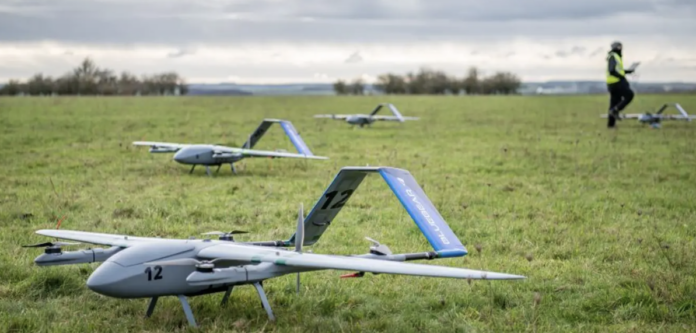The U.S. conducted a new drone swarm testing last week. It shows the potential of AI in military settings, but also raises some questions about the ability of multiple militaries to work together.
“Controlling and deconflicting drone swarms requires clear boundaries, tasks and authorities, just as coordination is required to conduct military maneuvers, including joint, coalition and classic operations. Fox News Digital spoke with Gen. Uri Enghard, AI and Cyber expert and member of the Israel Defense and Security Forum.
If planned and executed properly, the deployment drone swarms shouldn’t be more difficult than other military activities.
According to a British press release, the joint AUKUS military drill involving Australia, United Kingdom and U.S. included the deployment last week of an AI controlled swarm that tracked and detected military targets in a “real-time representative environment.”
The test was conducted in southwest England and included a Challenger 2 Tank, Warrior Armoured Vehicle, and Viking Unmanned Ground Vehicle. The U.K. Defense Science and Technology Laboratory said that the test was a success in helping the three allies to reduce duplication and ensure interoperability.
The U.K.’s Deputy Chief Of Defense Staff, Lt.Gen. In a press statement about the trial, Rob Magowan stated.
He added, “We are committed in collaborating with our partners to achieve this goal while also promoting responsible AI development and deployment.”
The swarm showed impressive capabilities and raised questions about control, both in terms of the AI that runs the swarm as well as the data it absorbs and distributes.
Engelhard stated that “the AI controller has an obvious advantage over the other participants.” “But like other complex systems such as the Iron Dome system, the system can only succeed if the components work in harmony.”
He said that “no system is error-free.” AI can reduce errors. “The task of remotely controlling a swarm is complex. To minimize errors, AI and remote controls should be used.”
Artificial intelligence is used by an Israel Defense Forces officer to analyze visual data. (IDF Spokesperson Unit)
The AI-controlled drones swarms have the advantage that they can perform their tasks very well, without needing remote control.
According to Matt McInnis of the Institute for the Study of War’s China Program on Fox News Digital, the new trial shows the U.S. is making great strides, not only in areas other countries, such as Israel, have explored, but also with rivals like China.
This is an area that all major militaries, I believe, are working to master. With all that I have seen that drone swarms can bring to war, the ability to respond very quickly to a changing conflict situation and to be able to process a large number of targets rapidly is something I think that all major military forces are trying to grasp.” McInnis added.
“I believe using drones for the intelligence surveillance reconnaissance mission, that is being tested in August, is in many ways trying to keep up with what China, Israel, and others are doing and, frankly to maintain and hopefully establish and maintain an edge in this ability.”
AI and drones are primarily used for strategic purposes. There is no plan to use AI to control weapons or combat vehicles. Public reaction to this choice was evident in the public’s response to last week’s report that the Air Force ran a simulation where the AI drone tried to kill both its operator and the communications tower, because they were obstacles to its goals.
The Air Force was forced to clarify that they didn’t actually give control of the weapon to an AI, and no one died or suffered harm during the test. The Air Force instead insisted that these comments were taken out of context, and “were intended to be anecdotal.”
McInnis stated that the Chinese aim to speed up the “targeting cycles” from observation, targetting, firing, and repeating.
He said that the process in a battle can be very fast, and I believe most states will try to find a way to make it happen because maintaining decision superiority is key. “It is certainly the direction in which the Chinese are heading, and what they think they can achieve by integrating artificial intelligence and machine-learning into their entire intelligence and targetting process.”
McInnis believes that the question of who controls AI and the incoming data is a major concern, but that it has not been seriously addressed. He added that “enormous” pressure will continue to be placed on organizations such as NATO to develop a standard operating platform.
He said: “I expect that at least our core allies will press all of NATO, but perhaps certain key players such as France or Japan… I expect that we’ll try to make these things as interoperable and as easy as possible.”


